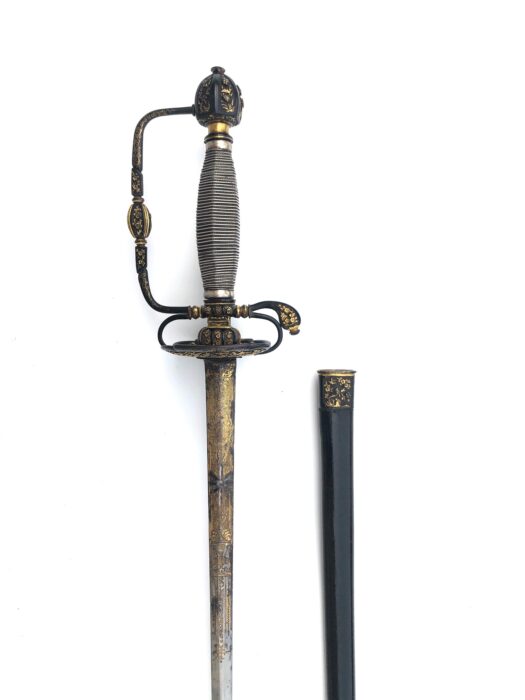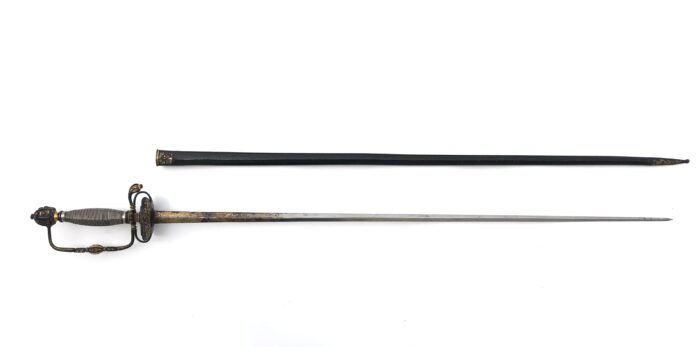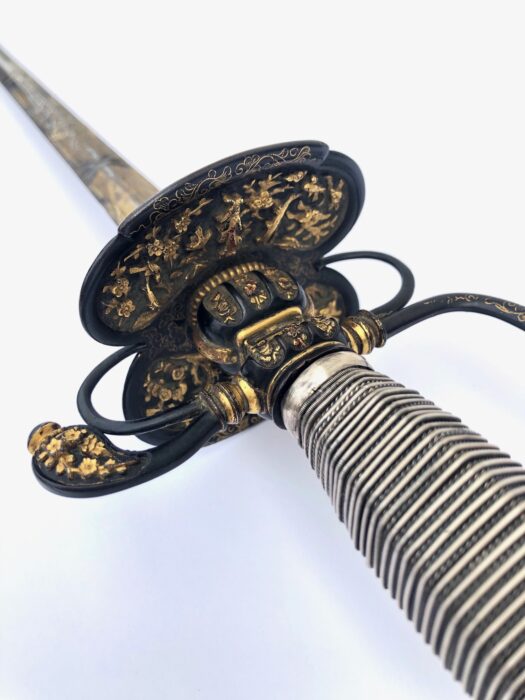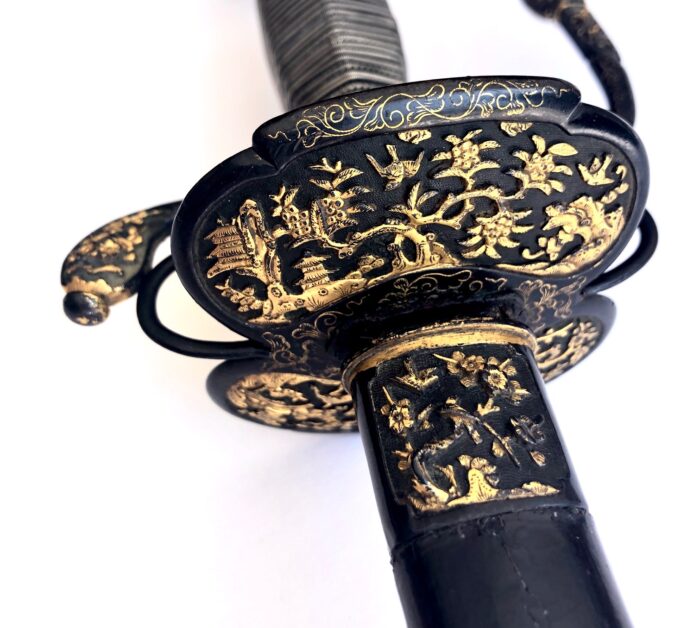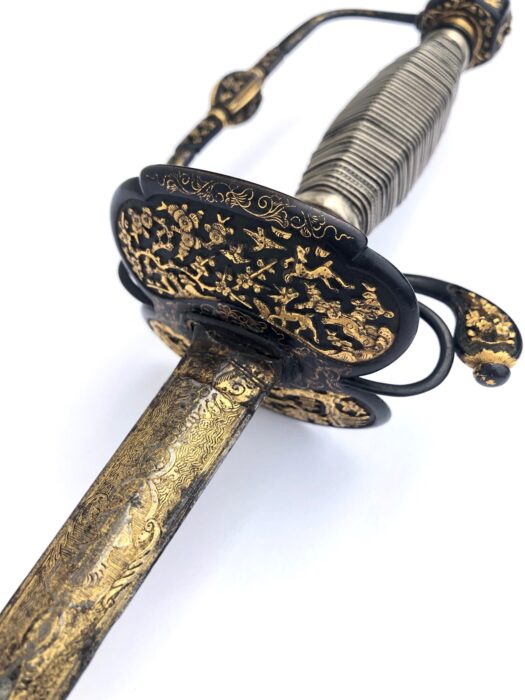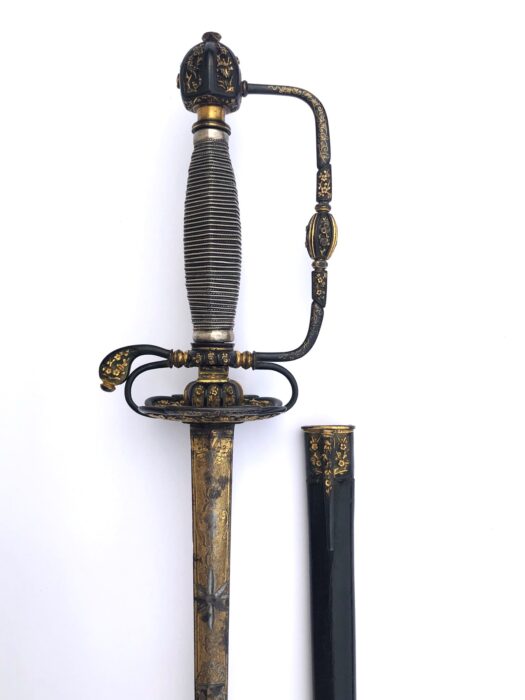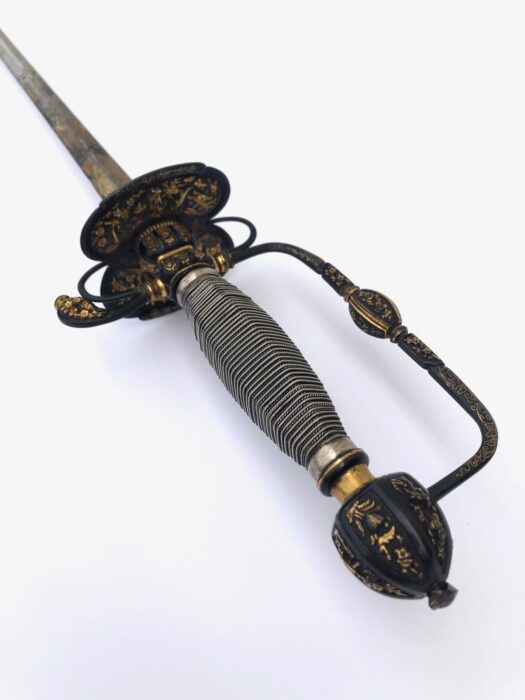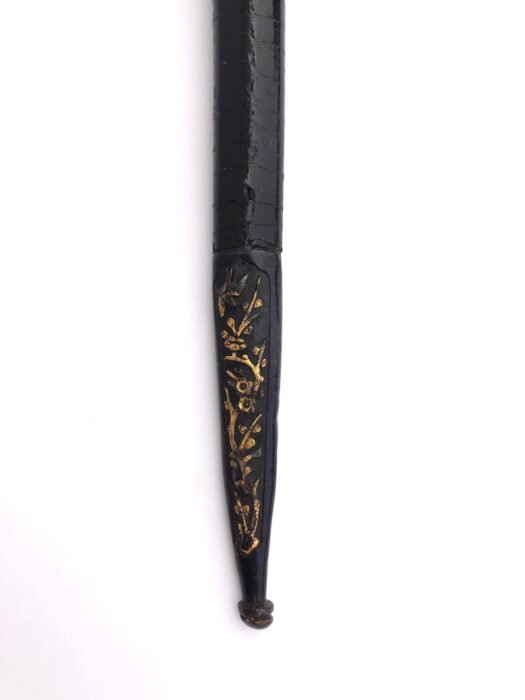An Early Sawasa Hilted Small Sword with Scabbard, Circa 1690-1700
With flattened hexagonal blade, perhaps Dutch, slightly rounded at the forte and engraved with a portrait head in profile against a stippled gilded ground, hilt of rounded bars, including double shell-guard, chased and gilded in high relief against a blackened fish-roe ground, inhabited with deer, birds and a pagoda in a field of prunus branches and blossoms, incised with gold inlaid scrollwork around the border, a pair of slender arms, forward canted globular quillon decorated en-suite, pumpkin form quillon-block, knuckle-guard with large faceted central moulding and inlaid with gold scrollwork, and hexagonal pommel, all decorated with same high relief motif, hexagonal wooden grip bound with twisted and plaited silver wire, lacquered leather scabbard retaining locket with frog and chape with en-suite high relief decoration.
This sword is a masterpiece in a superb state of preservation.
Sawasa is the Japanese name given to objects made by Asian artisans, adopting European models combined with Japanese and Chinese materials and decorative motifs. This decoration consists of refined gilt relief and engraving on a lustrous lacquered surface. Sawasa wares are the result of cultural interaction between Asia and Europe. As a consequence of global trade in the 17th century, mutual interest arose in the peculiarities of each other’s culture. The Dutch and other Europeans brought rare objects back from their travels which whetted the appetite for exotic rarities. The earliest sawasa objects are sword and hanger hilts and tobacco boxes ordered in Japan from Batavia, now Jakarta. Sawasa demonstrates not only the intercontinental commercial connections created by the Dutch East India Company (VOC) but also mutual cultural influences between Europe and Asia. **
Blade: 30 3/4” 78.1 cm.
overall: 38 3/4” 98.4 cm.
Provenance: Peter Tillou Collection, USA
** Reference: Sawasa – Japanese Export Art in Black and Gold 1650-1800 Rijksmuseum Amsterdam

